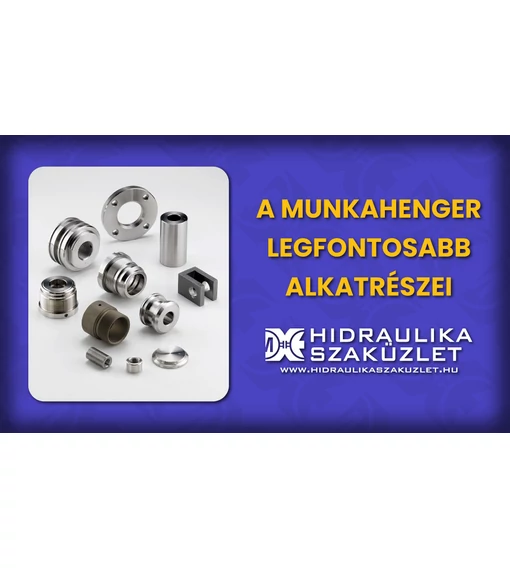The Functions of Hydraulic Cylinder Components
Before diving into the individual components, it’s worth saying a few words about the hydraulic cylinder itself. Its main task is to convert the pressure energy generated by a hydraulic or pneumatic system into mechanical motion. This is used to move machines and equipment, such as lifting machines, presses, or parts of vehicles.
Quality hydraulic cylinder components are now easily accessible. Several types are available, such as single-acting (applies force in only one direction) and double-acting (able to move in both directions) versions.
One of the most important parts is the cylinder barrel, which is the outer casing of the entire structure. It houses the internal moving components. It must withstand hydraulic pressure, so it is made of durable materials such as steel or aluminum.
The next important component is the piston, which moves inside the cylinder. It creates two separate pressure chambers, and the pressure difference acting on the surface of the part results in the desired movement.
The piston rod connects the piston to the external structure and transmits motion to the workpiece or other mechanical components. The rod is usually made of hardened steel to resist wear and bending.
Rod guides ensure the smooth movement of the piston rod by reducing friction and preventing lateral displacement. They come in various designs. An aluminum rod guide will deliver perfect performance in all situations.
Seals prevent oil or air leakage and help maintain the desired pressure throughout the system. Over time, these hydraulic cylinder components wear out, so their condition should be monitored closely, and regular inspections should not be neglected.

Every Small Component Matters
For example, there are spherical bearings that allow small movements between the cylinder and the structure, reducing stress and wear. Pivot pins ensure the movable mounting of the cylinder, establishing a connection with mechanical systems. Lastly, it's worth mentioning the special Glycodur bushings: these are self-lubricating bushings that reduce friction and increase the cylinder’s lifespan.
Maintenance requires great expertise, and timing is also crucial. Among the hydraulic cylinder components, seals are considered the most sensitive. To prevent leakage, it is recommended to inspect them whenever maintenance is performed. The condition of the piston rod is also important: damage or scratches on its surface can reduce the effectiveness of the entire sealing system and the overall performance.
In hydraulic cylinders, oil contamination can increase wear. Loose or damaged components can reduce cylinder efficiency. Lubrication of moving parts must also be ensured.
Maintenance Can Be Simple
Of course, only if the necessary components are available. Our webshop offers everything needed to operate a hydraulic system.
